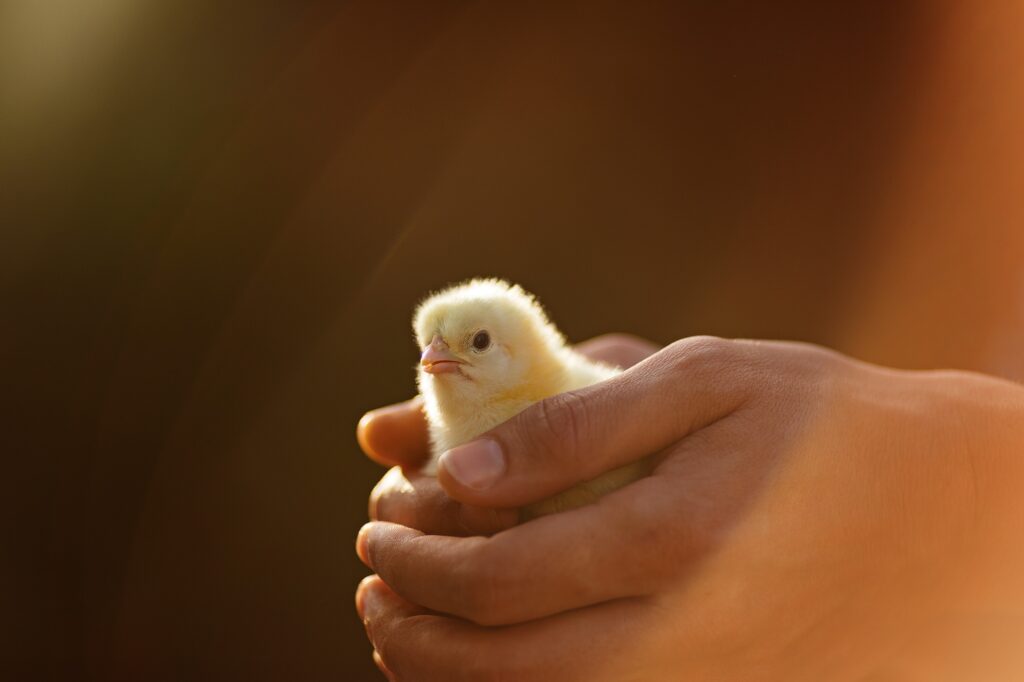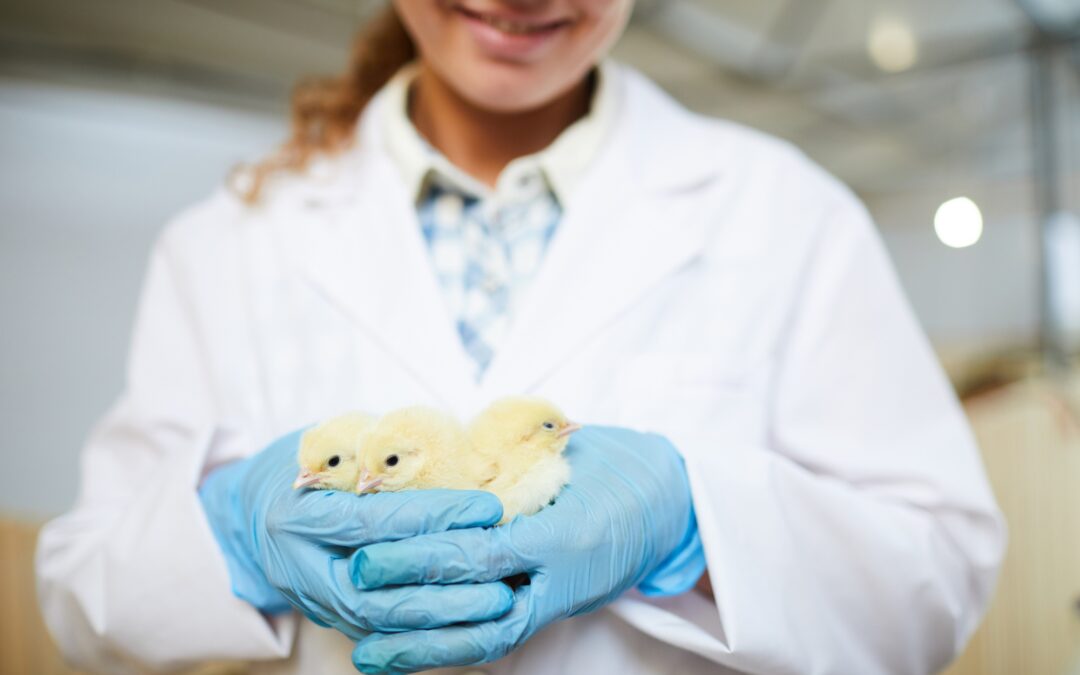In the bustling world of poultry production, ensuring the health of your flock is paramount. As the cornerstone of disease prevention, vaccination has transformed from a mere necessity to an art form, safeguarding the delicate balance of nature and industry.
But how exactly does hatchery vaccination fortify the early immunity of chicks? By the end of this deep dive, you’ll have a clearer understanding of how early intervention sets the stage for healthier, more resilient birds.
Imagining a world where newly hatched chicks are immediately armed against most avian diseases, is not a futuristic concept but a modern-day reality, thanks to the advancements in vaccine technology. Let’s explore the intricate dance between science and nature and uncover why hatchery vaccination is a game-changer for poultry health.
The Science Behind Vaccination: Building a Protective Shield
Modern vaccination techniques have revolutionized the way we approach poultry health. At the core of this advancement is the intricate interplay between vaccines and the avian immune system. By introducing weakened or inactivated strains of viruses to chicks within their first day of life, we essentially train their bodies to fight future infections.
When chicks are vaccinated at the hatchery, they receive a vaccine through methods like spray, subcutaneous injection, or in-ovo (directly into the egg) techniques. These methods ensure that the chicks are equipped with the necessary antibodies to thwart potential threats. This proactive measure not only prevents the onset of disease but also reduces the spread of infections within a flock.
The immune system, though complex, operates on a simple principle: recognize, respond, and remember. Vaccination enables this process by priming the immune cells to recognize and respond to disease agents without the actual burden of being ill. The production of antibodies following vaccination ensures that future exposures to the virus are met with a swift, robust immune response.
Through hatchery vaccination, we achieve a harmonized balance—chicks evolve into healthier birds, and poultry producers witness improved flock performance. This symbiotic relationship not only enhances the welfare of our chickens but also translates into economic benefits, as healthier flocks experience fewer losses and improved productivity.

Timing is Everything: The Critical First Day
In the realm of poultry production, time is of the essence, especially when it comes to safeguarding the health of your flock. The first day of a chick’s life is critical for establishing a solid foundation of immunity. Hatchery vaccination capitalizes on this window of opportunity, setting the stage for a healthy start.
The rationale behind early vaccination lies in the vulnerability of day-old chicks. At this stage, they possess a rudimentary immune system that is yet to encounter the myriad of pathogens they will face as they grow. By administering a vaccine early on, we essentially provide these chicks with a head start, boosting their natural defenses.
With early vaccination, the immune response is faster and more efficient, as the chick’s body is introduced to the antigen in a controlled manner. This approach ensures that the immune cells are primed and ready to combat diseases, leading to a higher survival rate and a healthier flock overall.
Moreover, early vaccination helps in reducing the spread of infections within the flock. Since vaccinated chicks are less likely to contract and spread diseases, the entire flock benefits from a reduced disease burden. This collective health improvement translates into less stress for the birds and improved welfare standards.
By vaccinating on the first day, we align with the natural rhythms of the immune system, ensuring that our flocks are not just surviving, but thriving. It’s a testament to how modern science can blend seamlessly with nature to produce optimal outcomes.
Understanding the Role of Vaccines in Disease Prevention
The conversation around vaccines often gravitates towards their role in preventing diseases. In the context of poultry production, this is no different. Vaccines are the unsung heroes, tirelessly working to shield our flocks from the onslaught of pathogens lurking in the environment.
Disease prevention is the primary goal of any vaccination program. By introducing harmless fragments of pathogens into a chick’s body, we stimulate an immune response, allowing the body to recognize and combat the real threat should it arise in the future. This not only prevents the disease from taking hold but also breaks the cycle of infection within the flock.
The impact of vaccination extends beyond individual health; it influences the entire ecosystem of poultry production. A vaccinated flock is less likely to succumb to outbreaks, which means fewer birds needing medical interventions, less use of antibiotics, and ultimately, a more sustainable production approach.
From a global perspective, the role of vaccines in managing avian diseases can’t be understated. With the ever-present threat of diseases like Newcastle Disease or Infectious Bronchitis, hatchery vaccination becomes a critical tool in safeguarding the global poultry industry. It represents a proactive approach, where preventing the problem outweighs the cost and effort of addressing it once it arises.
In essence, vaccination is not just a shield but a strategic ally in the battle against avian diseases, ensuring that our chickens remain healthy, and production remains stable.
The Economics of Vaccination: Investing in Poultry Health
In the business of poultry production, financial prudence and animal health go hand in hand. The decision to implement a hatchery vaccination program is not merely a health intervention; it’s an investment in the economic stability of the production operation.
Vaccination programs, though an upfront cost, translate into long-term savings and profitability. When we vaccinate our chicks early, we effectively reduce the incidence of diseases that would otherwise result in significant financial loss. Healthier flocks mean fewer birds lost to illness, lower veterinary costs, lower impact on resources and ultimately, higher productivity.
The reduced risk of disease outbreaks also means that producers spend less on remedial measures, such as antibiotics and medical treatments. This not only cuts costs but also aligns with the growing consumer demand for antibiotic-free poultry, making vaccinated birds a lucrative option in the market.
Moreover, hatchery vaccination contributes to higher quality yields, as healthier birds grow faster and produce better meat and eggs. This leads to enhanced marketability and competitive advantage, further solidifying the economic benefits of investing in early vaccination.

Chickens in hatchery
In a broader context, by ensuring a healthy flock, producers contribute to food security, providing a stable source of protein to meet the growing demand. The economic ripple effect is felt across the supply chain, from producers to consumers, underscoring the pivotal role vaccines play in modern poultry production.
Investing in hatchery vaccination is essentially investing in the future—it’s a commitment to sustainable, ethical, and profitable poultry production.
Hatchery Vaccination: Paving the Way for a Healthier Flock
As we navigate the dynamic landscape of modern poultry production, one thing remains clear: a healthy start leads to a promising future. Hatchery vaccination is at the forefront of this journey, ensuring that our flocks are well-equipped to face the challenges of disease and environmental stressors.
The process of hatchery vaccination is meticulous, requiring precision and expertise. From selecting the right vaccine to the method of administration, every detail is carefully curated to maximize immunity and minimize stress on the chicks. This level of care reflects a commitment to animal welfare and health, a core tenet of responsible production.
As the agricultural industry continues to evolve, the emphasis on vaccination as a preventive measure is more pertinent than ever. It’s a proactive approach that aligns with sustainable production practices, reducing the reliance on antibiotics and promoting the well-being of our birds.
The benefits of hatchery vaccination extend beyond the farm. Healthier flocks lead to improved productivity, contributing to food security and economic stability. It’s a testament to how scientific advancements can bolster traditional practices, shaping a future where poultry production is both ethical, sustainable and profitable.
In concluding, hatchery vaccination isn’t just about preventing disease; it’s about laying the groundwork for a thriving flock. It’s an investment in the health and success of our poultry, ensuring that they grow into robust, resilient birds that meet the demands of modern production and continue to provide an affordable source of animal protein. As we stand on the brink of a new era in poultry production, the role of hatchery vaccination shines brightly as a beacon of hope and innovation.
By embracing this technology, we not only protect our flocks from the threats of disease but also open the door to a more sustainable and ethical approach to production.
Hatchery vaccination is much more than a procedure; it’s a commitment to the future of poultry health. It represents the intersection of science and nature, where the power of vaccines enhances the immunity of our chicks. As we continue to fine-tune this process, the potential for healthier, more resilient flocks grows exponentially.
The journey to understanding the impact of early vaccination is ongoing, with each step bringing us closer to a time where our birds thrive well within their environment. By investing in hatchery vaccination, we lay the foundation for a brighter and more prosperous future in poultry production—a future where both producers and chickens can flourish.
